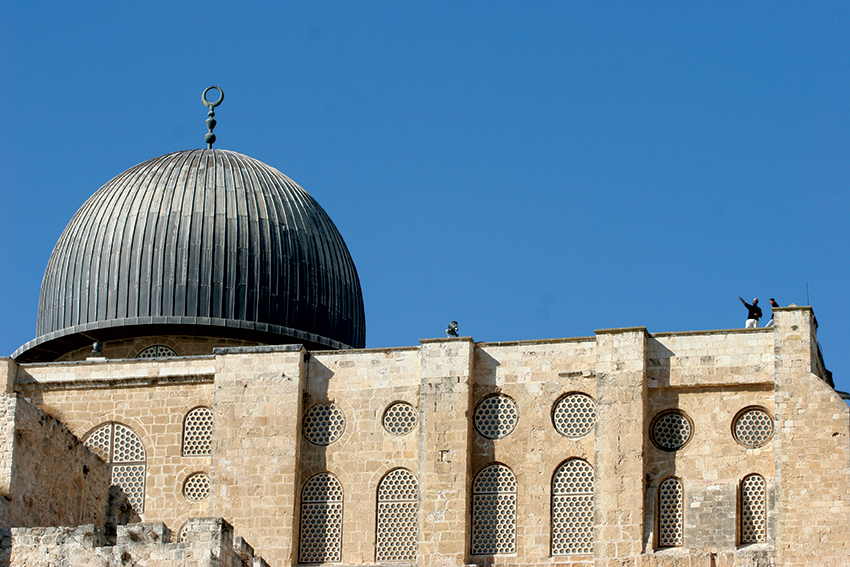
Courtesy of VisitPalestine.ps
The al-Aqsa Mosque (the Farthest Mosque) is a rectangular (50 m x 80 m) edifice constructed within the compound of the Haram al-Sharif (the Noble Sanctuary) located within the walls of the Old City of Jerusalem. According to Muslim belief, Prophet Muhammad traveled from the Sacred Mosque in Mecca to al-Aqsa during his Night Journey. This makes the mosque the third most sacred place in Islam, after Mecca and Medina.
The establishment of the sanctuary is associated with the Caliph ‘Umar bin al-Khattab (634 – 44 AD) who erected a mihrab (prayer niche) and a simple mosque on the same place where the present mosque stands. The remains of the original building, known as the Masjid al-’Umari (Mosque of Omar), are not tangible anymore.
The present shape of the sanctuary is the result of various modifications and re-buildings in different periods of time. The new mosque was initiated in 705 by the Umayyad Caliph Abd al-Malik and completed in 715 under the reign of his son and successor, Caliph Walid. It had fifteen arcades, from which only the ones on the southern wall have survived a number of earthquakes and reconstructions.
The two earthquakes of 748 and 1033 struck the building and partially destroyed it. In 1033, the mosque was reconstructed according to its original design by the Fatimid Caliph al-Dhaher. Also during that time, the space above the arcade in the central nave and the dome of the mosque were decorated with mosaics identical to the Umayyad mosaics that can be seen in the Dome of the Rock.
After 1099, Crusaders turned al-Aqsa into a church – while the Dome of the Rock was named Templum Domini (Temple of God) and also became a church, under the custody of the Augustinian Order – and later on used it as a royal residence (until 1128). In that era, the Templars added vaulted western and eastern annexes to the building. Currently, the western annex serves as the women’s mosque and the eastern one as the Islamic Museum.
In 1187, the Ayyubid Sultan Saladin restored al-Aqsa’s Islamic identity and consecrated it as a major spiritual center. Saladin installed a beautiful minbar (pulpit from which Friday sermons are held) made of ivory and wood. Unfortunately, it was burnt in 1969 and its remains are now stored in the Islamic Museum.
The present al-Aqsa can be entered through nine doors: seven of them located in the northern wall, one in the wall in the west, and another one in the east. In front of the northern wall stands a colonnade composed of seven slabs of stone, each covered by a decussate vault. The colonnade opens to the plaza of the Haram al-Sharif through a large arch.
While there are seven open gates leading up to the plaza of the Haram al-Sharif, non-Muslim visitors can enter it only through the Bab al-Maghariba (Moors’ Gate), but they can exit by any one of them. The opening hours for tourists are usually 7:30-11:00 am and 1:30-2:30 pm, except on Fridays and on religious holidays, but these times can be subject to change. Modest dress is required. The interior of the al-Aqsa Mosque and of the Dome of the Rock can be accessed only by Muslims.

